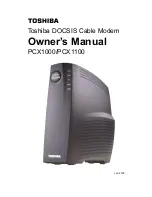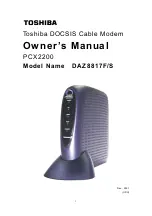
Prestige 650M-17 ADSL Modem
4-2
Remote
Node
Configuration
4.1.2 Encapsulation and Multiplexing Scenarios
For Internet access you should use the encapsulation and multiplexing methods used by your ISP. For
LAN-to-LAN applications, e.g., branch office and corporate headquarters, prior agreement on methods is
necessary because encapsulation and multiplexing cannot be automatically determined. Which methods to
use depends on how many VCs you have and how many different network protocols you need. Here are
some examples of more suitable combinations in such an application.
Scenario 1.
One VC, Multiple Protocols
PPPoA
(RFC-2364) encapsulation with
VC-based
multiplexing is the best combination because no extra
protocol identifying headers are needed. The
PPPoA
protocol already contains this information.
Scenario 2.
One VC, One Protocol (IP)
Selecting
RFC 1483
encapsulation with
VC-based
multiplexing requires the least amount of overhead (0
octets). However, if there is a potential need for multiple protocol support in the future, it may be safer to
select
PPPoA
encapsulation instead of
RFC 1483
, so you do not need to reconfigure either computer later.
Scenario 3.
Multiple VCs
If you have an equal number (or more) of VCs than the number of protocols, then select
RFC 1483
encapsulation and
VC-based
multiplexing.
Figure 4-2 Menu 11.1-Remote Node Profile
In
Menu 11.1
–
Remote Node Profile
, fill in the fields as described in the following table.
Menu 11.1 - Remote Node Profile
Rem Node Name= ChangeMe Bridge:
Active= Yes Ethernet Addr Timeout(min)= 0
VPI #= 0
Encapsulation= RFC 1483 VCI #= 32
Multiplexing= LLC-based
ATM QoS Type= UBR
Incoming: Peak Cell Rate (PCR)= 0
Rem Login= N/A Sustain Cell Rate (SCR)= 0
Rem Password= N/A Maximum Burst Size (MBS)= 0
Outgoing:
My Login= N/A Filter Sets:
My Password= N/A Input Device Filters=
Authen= N/A Output Device Filters=
Press ENTER to Confirm or ESC to Cancel:
















































